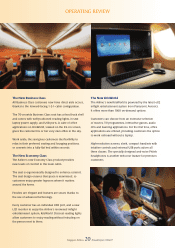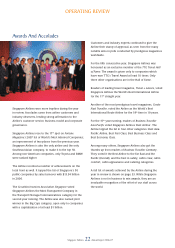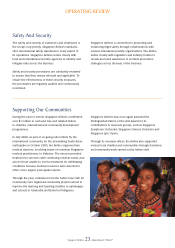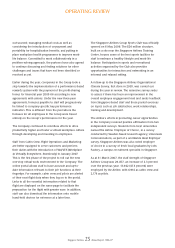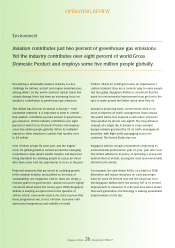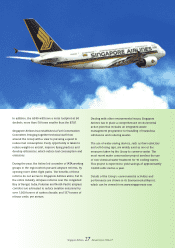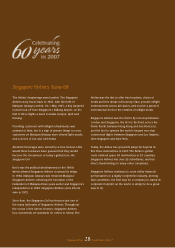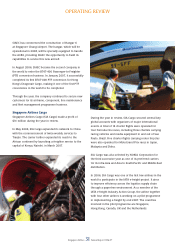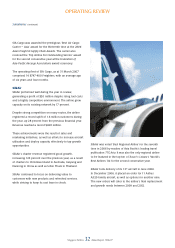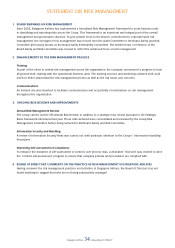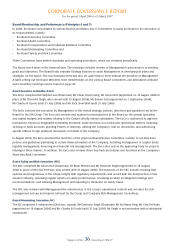Singapore Airlines 2007 Annual Report Download - page 28
Download and view the complete annual report
Please find page 28 of the 2007 Singapore Airlines annual report below. You can navigate through the pages in the report by either clicking on the pages listed below, or by using the keyword search tool below to find specific information within the annual report.
Singapore Airlines 26 Annual Report 2006-07
Developing a sustainable aviation industry is a key
challenge for airlines, aircraft and engine manufacturers,
among others. As the world confronts topical issues like
climate change, there has been an increasing focus on
aviation’s contribution to greenhouse gas emissions.
The debate has become emotional in Europe – even
somewhat irrational. It is important to keep in context
that aviation contributes just two percent of greenhouse
gas emissions. Yet the industry contributes over eight
percent of world Gross Domestic Product and employs
some fi ve million people globally. When its multiplier
impact on other industries is added, that number rises
to 29 million.
Over 2 billion people fl y each year, and the engine-
room for global growth is centred around the emerging
economies in Asia, where wealth creation and improved
living standards are allowing people to access air travel
who have never had the opportunity to do so in the past.
Proposed measures that are aimed at curtailing growth
in the aviation industry, and justifi ed on the basis of
‘sustainability’ are misguided. Carbon taxes are simply a
revenue grab from government: customers must be rightly
concerned about where the money goes. While Singapore
Airlines is keeping an open mind on the question of
carbon offsets, more work needs to be done to prove that
these programmes are, in fact, effective. Customers will
want more transparency and visibility of results.
Environment
Further, offsets do nothing to lessen an organisation’s
carbon footprint: they are a cosmetic way to make people
feel less guilty. Singapore Airlines is concerned that the
quest for environmental improvement may get lost in the
race to make people feel better about what they do.
Instead of proposing taxes, Governments need to do
more to improve air traffi c management fl ows around
the world. Alone, this measure could reduce emissions
from aviation by almost one-eighth. The long-debated
concept of a single sky in Europe is a key example:
Europe remains governed by 32 air traffi c management
providers, with fl ight paths zig-zagging across the
continent. The United States has one.
Singapore Airlines remains committed to improving its
environmental performance, year on year, year after year.
The Airline adheres to its policy of operating a young and
modern fl eet of aircraft; among the most environmentally
effi cient in the world.
For example, the new Airbus A380, on a fl ight of 5000
kilometres, will reduce emissions on a per-passenger
basis by some 76 percent over the fi rst long-haul jet in
the Singapore Airlines fl eet: the Boeing 707. A 76 percent
improvement in emissions in a 40 year time-frame shows
that each generation of technology is making quantifi able
improvements on the last.
Aviation contributes just two percent of greenhouse gas emissions.
Yet the industry contributes over eight percent of world Gross
Domestic Product and employs some fi ve million people globally.
OPERATING REVIEW
Singapore Airlines 26 Annual Report 2006-07






